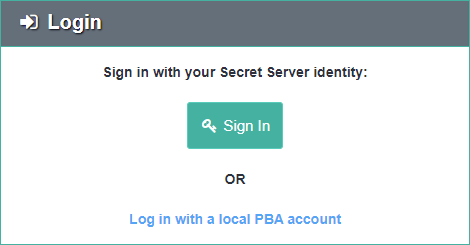Single Sign-On (Version 10.4 and Later, Cloud)
As of version 10.4.000000, Secret Server can act as an identity provider for PBA.
- Any user with the View Security Analytics role permission in Secret Server may log into PBA.
- Additionally, any user with Administer Security Analytics role permission is able to perform administrative actions once logged into PBA through Single Sign-On (SSO).
- Local PBA users (the initial users prior to integrating PBA into Secret Server) still have administrative rights as well.
Typically, Single Sign On will start working without additional configuration.
Verify Single Sign On
Verify that on both of these pages—<SECRET SERVER>/AdminAnalyticsView.aspx and <PBA>/system_settings—the PBA and Secret Server key pairs both show a status of Confirmed. This key exchange is used for verification of Secret Server as an identity provider.
In order to verify that the SSO claim was signed by Secret Server, PBA must have a copy of Secret Server’s public key.Secret Server versions 10.4.000000 or later have infrastructure for key exchange and rotation between Secret Server and PBA.
- When the integration key is first copied from PBA and saved to Secret Server, it contains PBA’s initial public key.
- Secret Server then generates its own key pair and sends its public key to PBA.
- PBA registers Secret Server’s public key and sends confirmation back to Secret Server.
When a key rotation is initiated, PBA generates a new key pair and sends a signed request to Secret Server. The rest of the process is the same as the initial key exchange, except that each message is signed and verified during the rotation.
Troubleshooting
If Secret Server or PBA shows that its Key Pair status is Pending Confirmation, try the Resend Confirmation button in either application.
- For example, if in Secret Serverits key pair is Pending, then you would click the Resend Confirmation button in PBA, so that PBA will retry communicating to Secret Server that PBA did register Secret Server’s latest public key.
